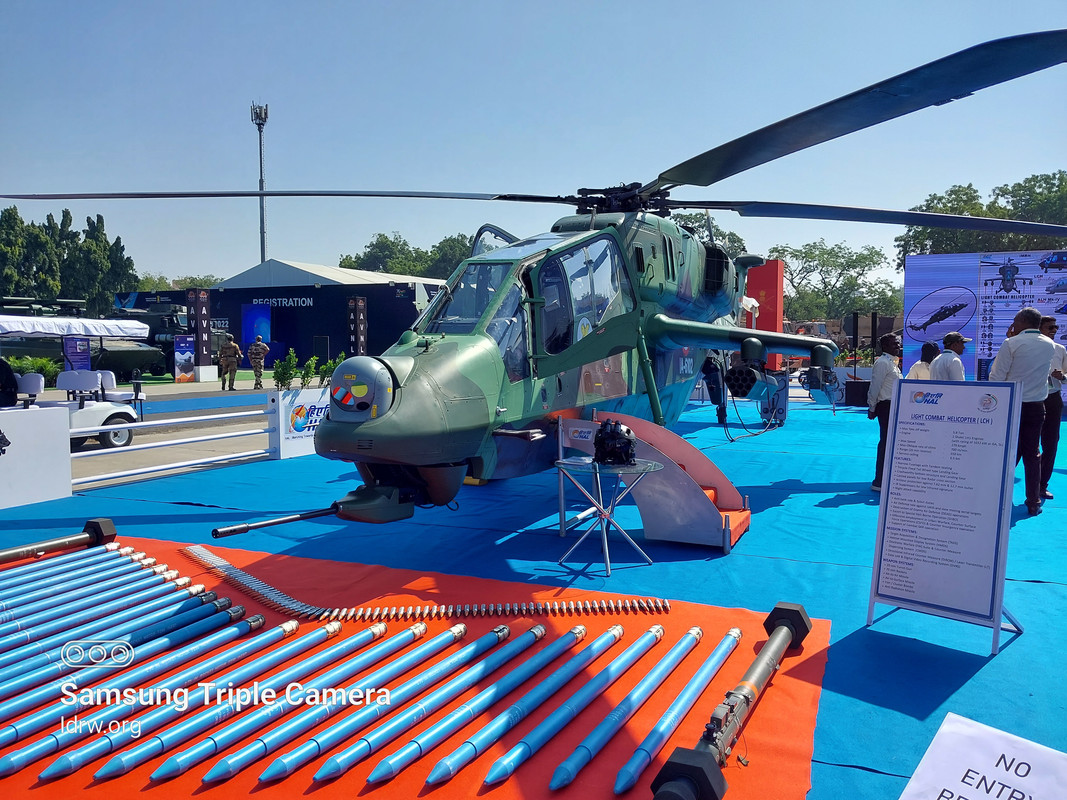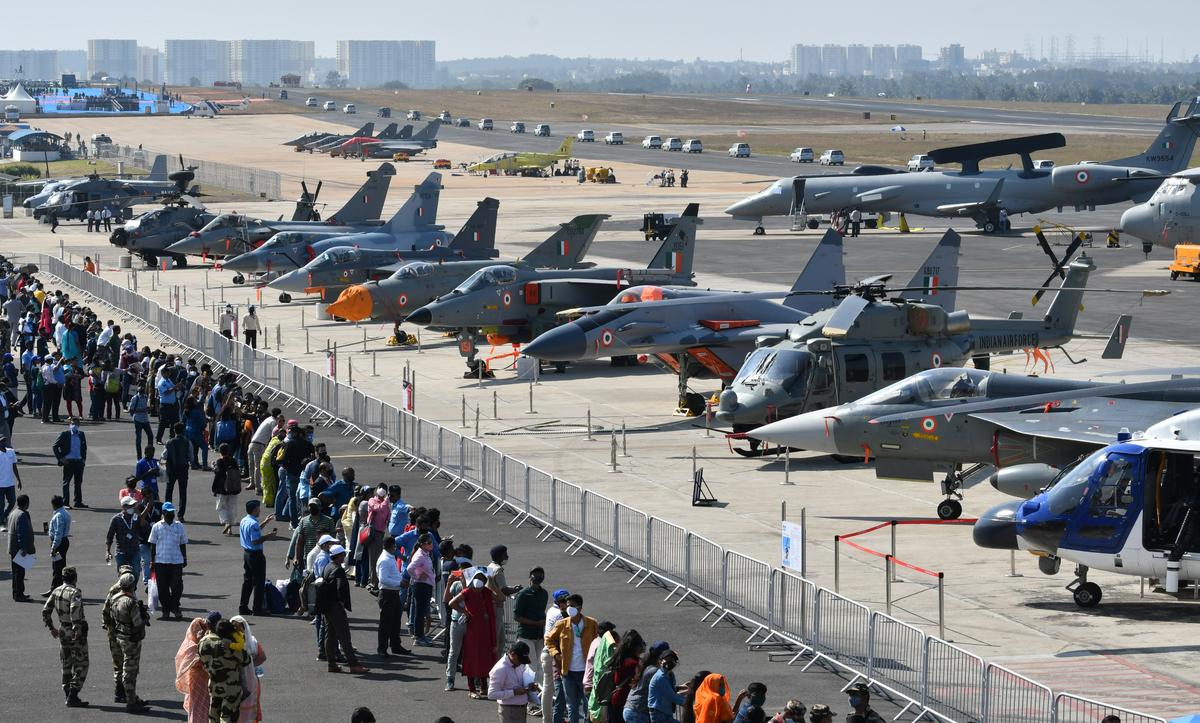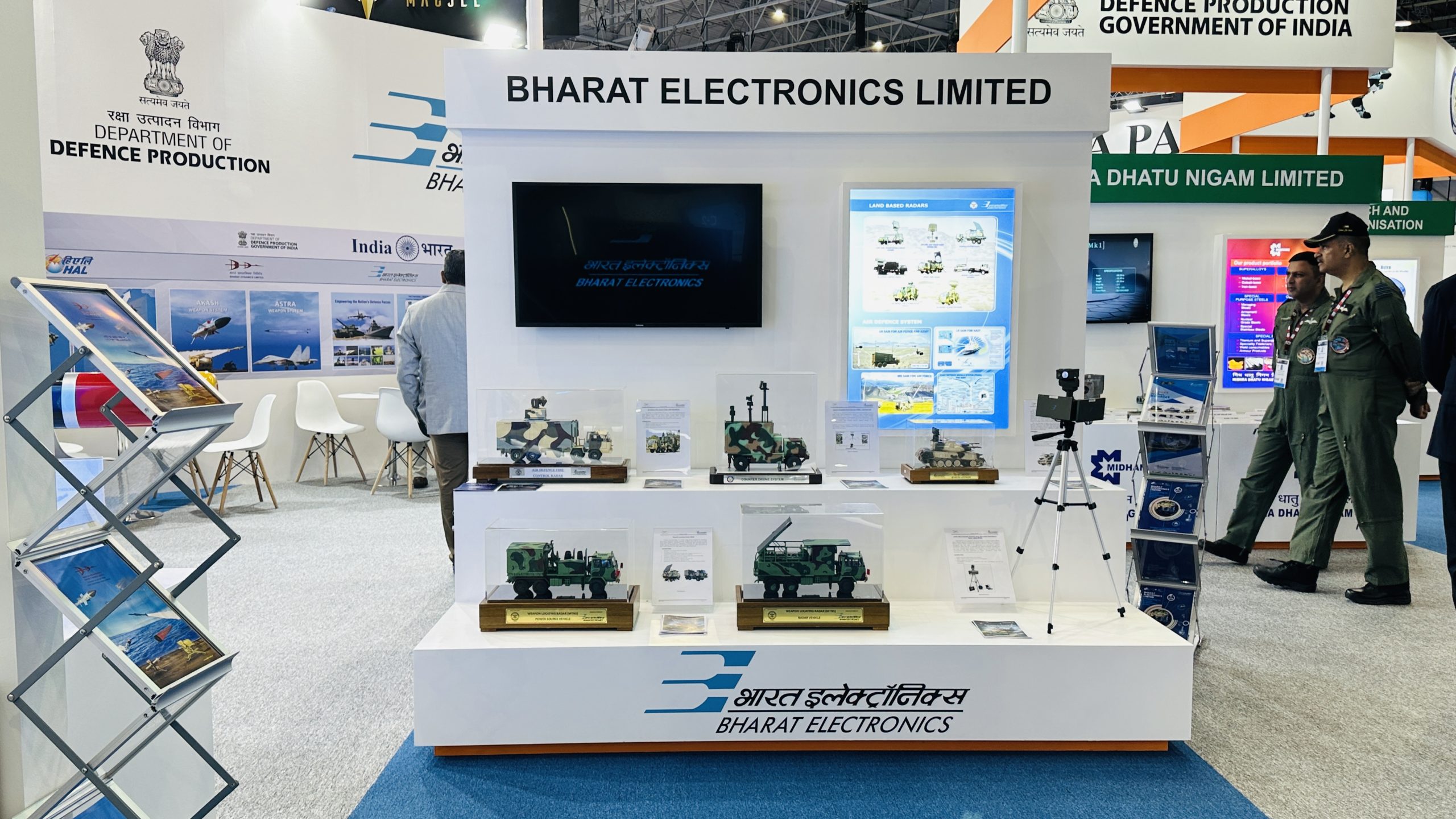SOURCE: IDRW.ORG


At the India Today Conclave 2025, Air Chief Marshal AP Singh, Chief of the Air Staff of the Indian Air Force (IAF), made a significant statement about the IAF’s potential response to evolving regional threats, particularly the possibility of Pakistan acquiring fifth-generation fighter jets.
While emphasizing India’s commitment to its indigenous Advanced Medium Combat Aircraft (AMCA) program, the Air Chief Marshal hinted at the possibility of an off-the-shelf purchase of foreign fifth-generation fighters as a stopgap measure if the strategic balance in South Asia shifts dramatically.
Continue readingSOURCE: IDRW.ORG


In a significant development for India’s defense aviation sector, the Indian Air Force (IAF) has enlisted the expertise of private sector companies to tackle persistent technical issues plaguing its fleet of Pilatus PC-7 Mk-II Basic Trainer Aircraft (BTA). Stationed at the prestigious Air Force Academy in Dundigal, Hyderabad, these aircraft form the backbone of the IAF’s Stage-1 pilot training program. However, recurring equipment malfunctions, particularly engine oil leaks, have raised concerns about the safety and efficiency of this critical training infrastructure. This collaboration with private firms marks a shift toward leveraging domestic industry capabilities to bolster operational readiness, amid a backdrop of stalled procurement plans and audit revelations.
The Pilatus PC-7 Mk-II, a Swiss-manufactured turboprop trainer, was inducted into the IAF in May 2013 to address a pressing need for modern basic trainers following the grounding of the indigenous HPT-32 fleet in 2009 due to safety issues. Under a Rs 2,896 crore contract signed in May 2012 with Pilatus Aircraft Ltd., the IAF acquired 75 aircraft, which were delivered between 2013 and 2015. Based at Dundigal, these single-engine, tandem-seat trainers have since clocked over 200,000 flying hours, playing a pivotal role in preparing rookie pilots for intermediate and advanced training stages.
Continue readingSOURCE: AFI


The Indian Air Force (IAF) stands at a critical juncture as it navigates the modernization of its fighter fleet amidst a rapidly evolving regional security landscape. According to a projection by the India Today Group, the IAF’s fighter squadrons could plummet to as low as 25 by 2035 if the planned phasing out of aging platforms like the Jaguar, MiG-29, and Mirage-2000 squadrons proceeds over the next decade without sufficient replacements.
This number would bring the IAF’s squadron strength on par with the Pakistan Air Force (PAF), which currently operates 25 squadrons—a concerning prospect given India’s broader strategic commitments, including countering China along the Line of Actual Control (LAC). However, the projection paints only a partial picture, as it does not account for additional procurements and indigenous programs that could bolster the IAF’s capabilities in the coming years.
Continue readingSOURCE: AFI


The Indian Army has been bolstering its capabilities to address modern warfare challenges, particularly in high-altitude and contested regions like the Line of Actual Control (LAC) with China and the Line of Control (LoC) with Pakistan. A critical part of this modernization includes the acquisition of attack helicopters, which are essential for providing close air support, reconnaissance, and precision strikes in diverse terrains.
However, delays in the delivery of six Boeing AH-64E Apache helicopters from the United States have raised questions about whether the Indian Army should reconsider its reliance on foreign platforms and instead focus on accelerating the procurement of the indigenously developed Light Combat Helicopter (LCH) Prachand, manufactured by Hindustan Aeronautics Limited (HAL).
Continue readingSOURCE: AFI


Skyroot Aerospace, a pioneering private space company from India, is on the brink of making history with the preparations for the inaugural flight of its Vikram-1 rocket, scheduled for later this year. This launch marks a significant milestone in India’s burgeoning private space sector, aiming to catapult small satellites into orbit with unprecedented ease and efficiency.
The team at Skyroot has been diligently working on the final preparations, focusing on rigorous system checks, simulations, and comprehensive analyses. A critical component under scrutiny is the carbon composite payload fairing, designed to protect the satellites during the ascent through Earth’s atmosphere. This fairing is crucial for ensuring that the small satellites reach their intended orbits unscathed.
Continue readingSOURCE: AFI


Aero India, Asia’s premier air show and a flagship event showcasing India’s aerospace prowess, has long been synonymous with Bengaluru, hosted at the Yelahanka Air Force Station since its inception in 1996. However, a growing chorus of private sector companies—key stakeholders in the biennial exhibition—has begun pressing the Indian Air Force (IAF) and the Ministry of Defence (MoD) to relocate the event. Citing persistent constraints in exhibition space and the chaos of Bengaluru’s notorious traffic during the show, these firms argue that the city’s infrastructure is buckling under the event’s expanding scale, hampering its potential as a global aerospace platform.
For private companies, Aero India is a critical opportunity to display cutting-edge technologies, pitch products to the IAF and international buyers, and forge partnerships. Yet, the Yelahanka venue’s limited space has become a sticking point. With each edition—most recently Aero India 2023—seeing a surge in exhibitors, including startups, MSMEs, and global giants like Boeing and Airbus, the exhibition area is increasingly overcrowded. Companies complain that static displays, pavilions, and chalet spaces are squeezed, leaving little room to showcase large systems like drones, helicopters, or artillery guns effectively.
Continue readingSOURCE: AFI


In a significant development in the volatile region of Balochistan, Mufti Shah Meer, a figure accused of aiding Pakistan’s Inter-Services Intelligence (ISI) in the kidnapping of former Indian Navy officer Kulbhushan Jadhav, was shot dead by unidentified gunmen in Turbat, Pakistan, on Friday night, March 7, 2025. The killing has sparked widespread speculation about the motives and perpetrators, given Meer’s alleged ties to terrorist activities and his role in one of South Asia’s most contentious espionage cases.
According to reports from local authorities, Mufti Shah Meer was gunned down outside a mosque in Turbat, Balochistan’s second-largest city, shortly after offering prayers on Friday evening. Eyewitnesses stated that armed men on motorcycles opened fire on Meer, hitting him with multiple bullets. He was rushed to a nearby hospital but succumbed to his injuries shortly afterward. The attackers fled the scene, and no group has yet claimed responsibility for the killing, leaving the incident shrouded in mystery.
Continue readingSOURCE: RAUNAK KUNDE / NEWS BEAT / IDRW.ORG


At the recently held India Today Conclave, Indian Air Force (IAF) Chief Air Chief Marshal (ACM) AP Singh addressed swirling speculation about the potential acquisition of the U.S.-made Lockheed Martin F-35 Lightning II stealth fighter jet, firmly stating, “No comments.” He further clarified that the IAF has not given any thought to purchasing the aircraft, nor has any official offer been made by the United States to India.
Emphasizing the need for a thorough analysis before considering such a significant procurement, ACM Singh noted that the IAF has yet to evaluate the F-35 fully or determine whether even a limited acquisition—such as 10 aircraft—would meet its operational requirements. This statement puts to rest, at least for now, the ongoing buzz about India potentially joining the global F-35 program, while highlighting the IAF’s cautious and methodical approach to fleet modernization.
Continue readingSOURCE: RAUNAK KUNDE / NEWS BEAT / IDRW.ORG


In the shadow of the ongoing border tensions with China, the Indian Army is sending a clear and urgent message to both public and private sectors: innovate, collaborate, or source – but deliver. The Army’s current fleet of Unmanned Aerial Vehicles (UAVs), predominantly of Israeli origin, is ageing and in dire need of replacement and enhancement to keep pace with modern warfighting requirements.
The Indian Army currently operates around 50 drones, including the Heron Mark-I, Mark-II, and the Searcher-II, all sourced from Israel. These drones have been pivotal in maintaining surveillance and reconnaissance along the volatile Line of Actual Control (LAC) with China. However, the relentless operational demands have taken their toll on these machines. In a recent move to bolster its capabilities, the Army has inducted four new satellite communication-enabled Heron Mark-II drones, which are expected to significantly enhance the surveillance capacity at the border.
Continue readingSOURCE: RAUNAK KUNDE / NEWS BEAT / IDRW.ORG


The Naval Materials Research Laboratory (NMRL), under the aegis of the Defence Research and Development Organisation (DRDO), is making significant strides in the realm of underwater technology by focusing on the development of a Fuel Cell-based Capsule Power Plant for the High Endurance Autonomous Underwater Vehicle (HEAUV). This project aims to bolster India’s maritime capabilities with a focus on stealth and endurance.
NMRL endeavours to craft a power plant that not only extends the operational life of underwater vehicles but does so silently, making them less detectable and more effective for strategic naval operations.
Continue readingSOURCE: AFI


In a significant shift aimed at fostering a more inclusive and competitive defence manufacturing ecosystem, India’s Ministry of Defence (MoD) is planning to expand competitive bidding for weapons procurement for the armed forces. This move is expected to level the playing field for private sector companies, which have long been overshadowed by Defence Public Sector Undertakings (DPSUs) in securing production contracts. The initiative reflects the government’s broader push to transition away from the practice of directly awarding procurement contracts to public-sector entities without a tendering process, according to a recent report by Business Standard.
Historically, the procurement process has heavily favored DPSUs, with the majority of production contracts being allocated to these state-run entities. This has limited the private sector’s ability to compete and contribute meaningfully to India’s defence manufacturing capabilities. However, the MoD’s new approach signals a commitment to transparency, efficiency, and greater private-sector participation—key pillars of the government’s ‘Aatmanirbhar Bharat’ (self-reliant India) vision.
Continue readingSOURCE: AFI


For much of its 75-year history, the Pakistan Air Force (PAF) has predominantly relied on single-engined fighter jets to form the backbone of its aerial fleet. From the F-86 Sabre in the 1950s to the modern JF-17 Thunder, the PAF has favored lightweight, cost-effective, and agile single-engine platforms. The only notable exception was its operation of the twin-engined Shenyang F-6, a Chinese copy of the Soviet MiG-19, which served from the 1960s to the 1980s.
However, recent developments indicate a significant strategic shift as the PAF plans to integrate twin-engined 5th-generation fighter jets like China’s J-35A and Turkey’s TAI KAAN, while also pursuing an indigenous 5th-generation fighter under the PFX program. This departure from tradition reflects evolving regional threats, technological ambitions, and a desire for greater operational flexibility. Below, we explore the reasons behind this pivot.
Continue readingSOURCE: AFI


The Intermediate Jet Trainer (IJT-36), recently renamed Yashas by Hindustan Aeronautics Limited (HAL), has undergone a significant transformation, not just in nomenclature but in its core design philosophy. The most striking upgrade is the complete overhaul of its cockpit layout, which now features a state-of-the-art glass cockpit with multi-functional displays (MFDs) and a heads-up display (HUD)
. These modern upgrades, showcased alongside the older cockpit layout, reflect HAL’s commitment to enhancing the aircraft’s role as a pivotal platform in the Indian Air Force’s (IAF) advanced pilot training programs. Beyond aesthetics, the Yashas integrates cutting-edge avionics and Indian-made Line Replaceable Units (LRUs), addressing obsolescence issues, improving weight management, and reinforcing India’s push for self-reliance in defense manufacturing.
Continue readingSOURCE: AFI


Bharat Electronics Limited (BEL), a Navratna Defence Public Sector Undertaking (PSU) under the Ministry of Defence, has announced the acquisition of additional orders valued at Rs. 577 crore since its last disclosure on February 20, 2025. The latest contracts, secured as of March 6, 2025, encompass a diverse range of advanced defense and communication systems, reinforcing BEL’s pivotal role in India’s indigenous defense ecosystem.
The major orders include cutting-edge airborne electronic warfare (EW) products, an advanced composite communication system for submarines, Doppler weather radars, train communication systems, radar upgradation projects, as well as spares and related services. These additions bring BEL’s total order inflow for the current financial year (FY25) to an impressive Rs. 13,724 crore, highlighting the company’s robust growth trajectory and its expanding footprint in both defense and civilian sectors.
Continue readingSOURCE: IDRW.ORG


The recent high-altitude trials of the U.S.-made Stryker Infantry Fighting Vehicle (IFV) in Ladakh have stirred significant debate within India’s defense establishment, following a detailed exposé by idrw.org titled “Inside Story: Stryker IFV Falters in Ladakh High-Altitude Trials, Nearly had a Breakdown.” The report highlighted critical operational shortcomings of the Stryker in the rugged, oxygen-scarce terrain of Ladakh, prompting a reevaluation among Army circles.
While some Ministry of Defence (MoD) and Army officials remain inclined to overlook the failure and proceed with procurement after fixes by General Dynamics Land Systems-Canada, Army sources have revealed to idrw.org that the trial failure report has gained traction across Army groups, leading top-tier Army leadership to reconsider their enthusiasm for the Stryker.
Continue reading